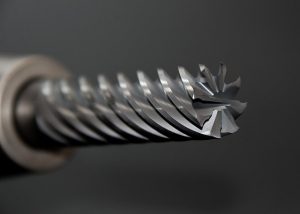
Not to be confused with a lathe, milling machine is a type of manufacturing machine that uses a rotary cutting tool to remove material from a stationary workpiece. Milling machines can perform a variety of material-removing processes, including cutting, drilling, shaping and more. During operation, they press a rotary cutting tool against a stationary workpiece, thereby removing material from the workpiece. Below are five fast facts about milling machines and how they work.
#1) Invented in the 1700s
You might be surprised to learn that milling machines have been around for hundreds of years. During the mid-1700s, French inventor Jacques de Vaucanson filed a patent for a rotary file that mimicked the operation of modern-day milling machines. Just a few decades later, Samuel Rehe invented a functional milling machine. Since then, milling machines have emerged as one of the most commonly used types of machines in the manufacturing industry.
#2) Horizontal or Vertical Alignment
Although there are many types of milling machines, most of them can be classified as either horizontal or vertical depending on the alignment of their respective cutting tool. Vertical milling machines are characterized by a vertical alignment, whereas horizontal milling machines are characterized by a horizontal alignment. In a vertical milling machine, the cutting tool is mounted vertically. In a horizontal milling machine, the cutting tool is mounted horizontally.
#3) Produces Swarf
All milling machines product swarf during operation. Going back to the basics of milling, this process is designed to remove material from workpieces. As the cutting tool presses against the workpiece, it cuts or digs out material. The material removed from milling is known as swarf or chips. Most manufacturing companies recycle or reuse swarf.
#4) Cutting Speed Is Measured in Revolutions
The speed at which a milling machine’s cutting tool rotates is measured in revolutions. Also known as feed rate, it plays an important role in the milling machine’s operations. If the feed rate is too slow, it may fail to remove an appropriate amount of material — or it will simply take a long time to remove the material. If the feed rate is too fast, it may heat to the material to the point where it melts and deforms the workpiece.
#5) CNC-Based Milling Machines
Many milling machines are computer-numerical-control (CNC)-based. In other words, they can be programmed in a software or application to automatically remove material from a workpiece without the need for manual operation. CNC-based milling machines allow for automated operations, thereby streamlining cutting processes for manufacturing companies.
